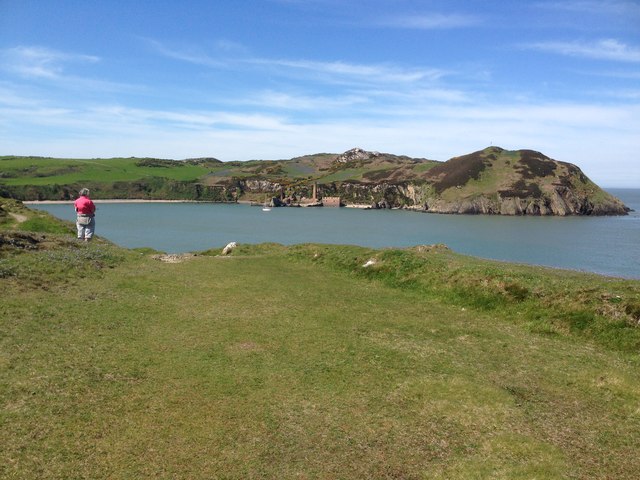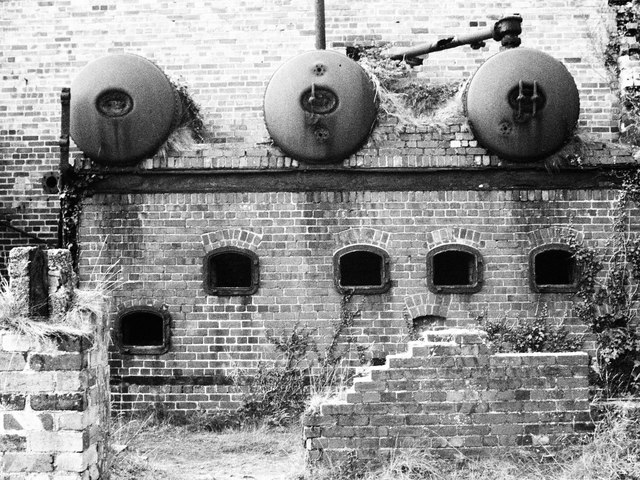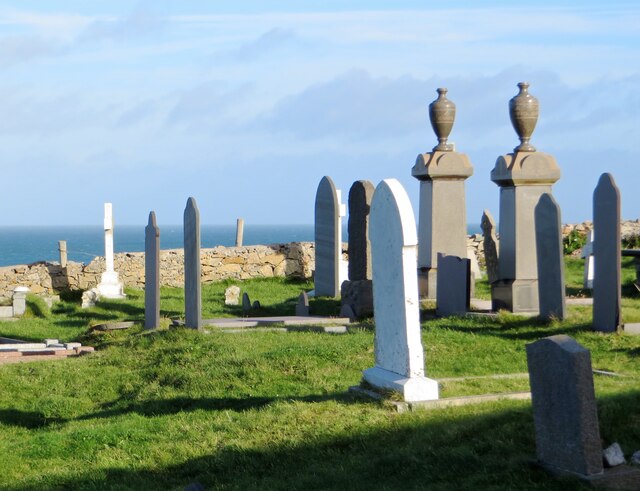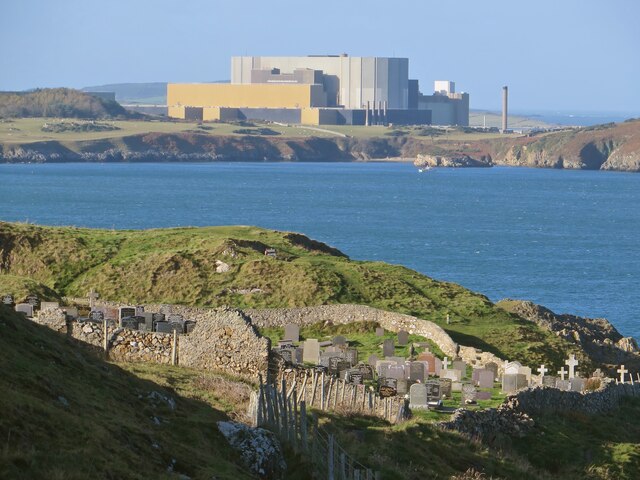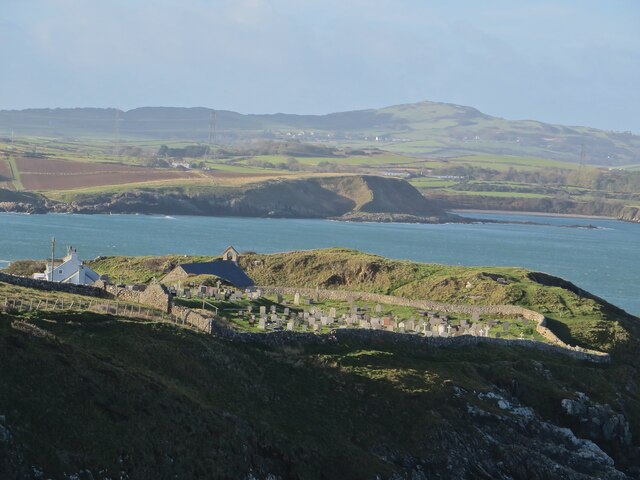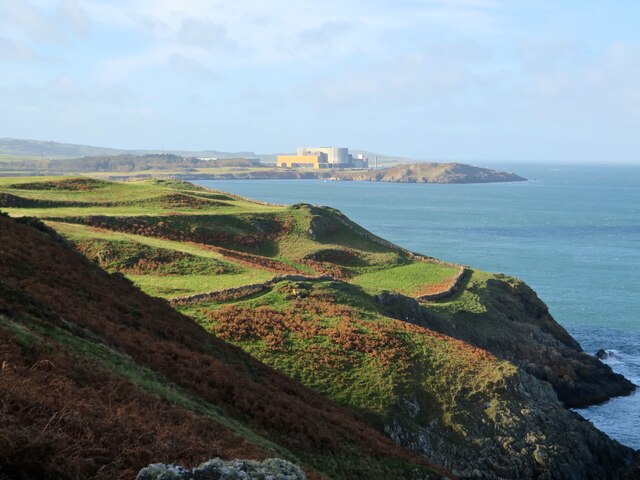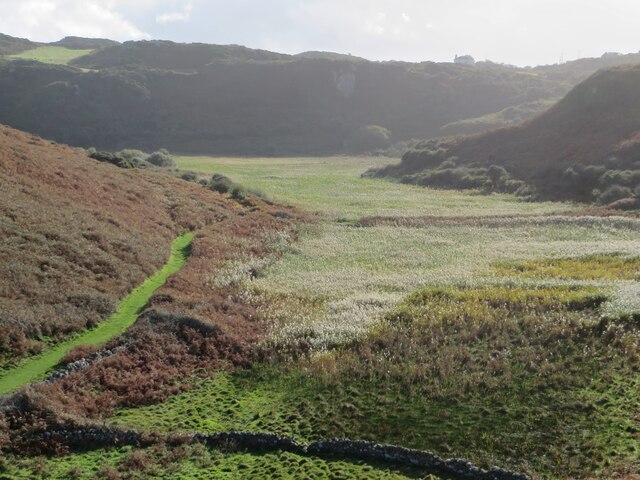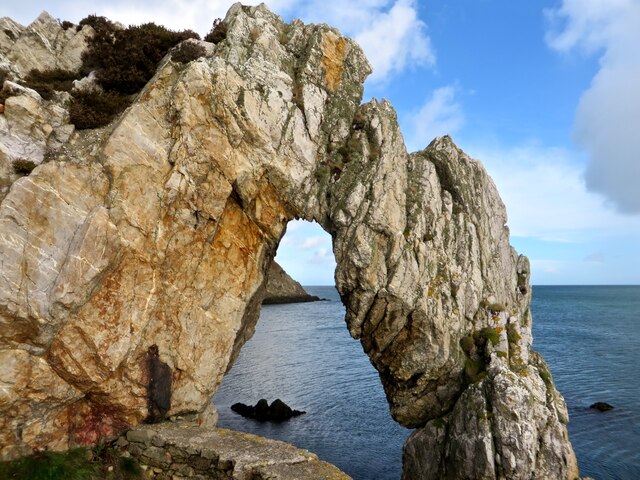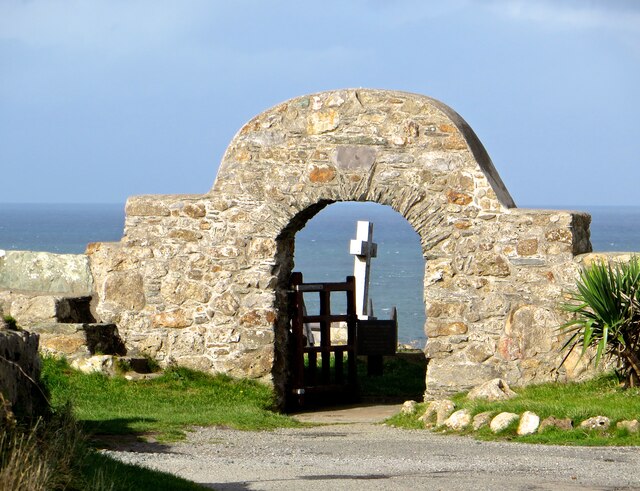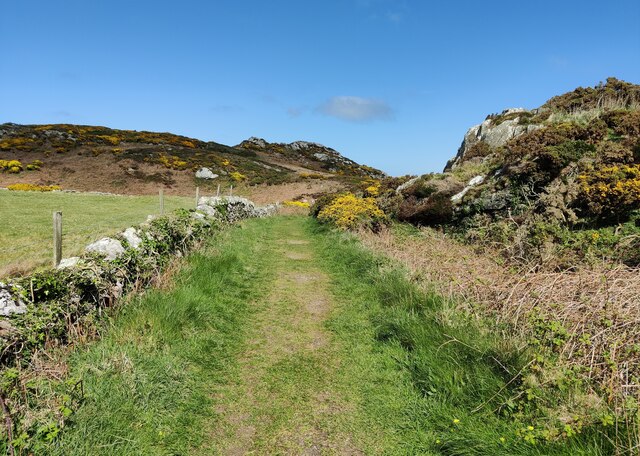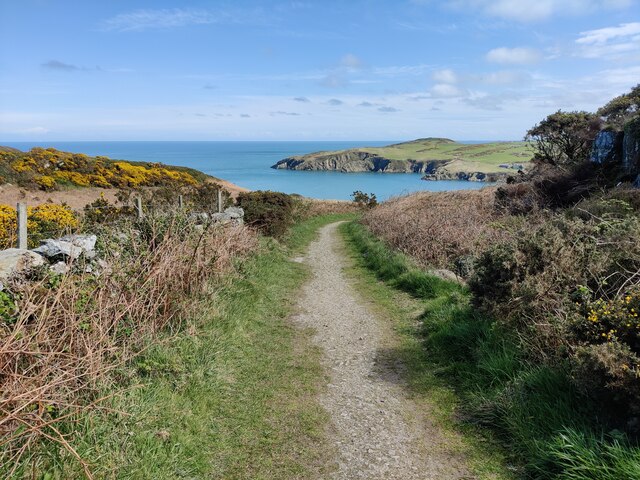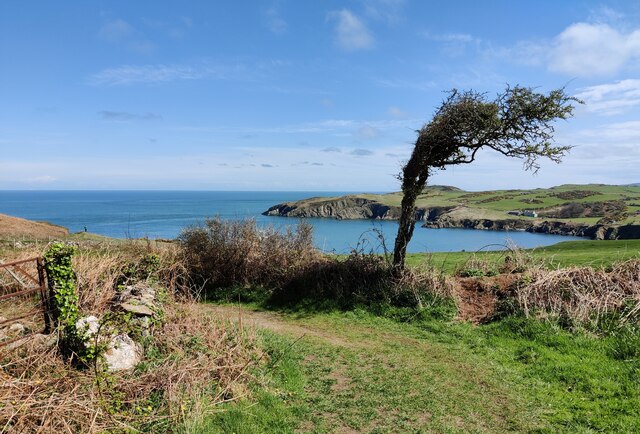Porth Llanlleiana
Bay in Anglesey
Wales
Porth Llanlleiana
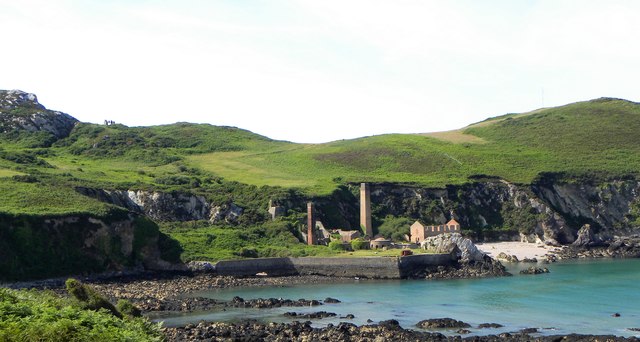
Porth Llanlleiana is a picturesque bay located on the northern coast of Anglesey, an island in North Wales. This bay is known for its stunning natural beauty and is a popular destination for both locals and tourists alike.
Surrounded by rugged cliffs and rolling hills, Porth Llanlleiana offers breathtaking views of the Irish Sea. The bay itself is characterized by its sandy beach and crystal-clear waters, making it an ideal spot for swimming, sunbathing, and picnicking. The beach is relatively secluded and often less crowded than other nearby beaches, providing a peaceful and tranquil atmosphere for visitors.
Porth Llanlleiana is also notable for its rich history. It was once a bustling harbor during the 19th century, serving as a hub for the local fishing and quarrying industries. The remnants of old lime kilns can still be seen along the bay, serving as a reminder of its industrial past.
In addition to its natural and historical significance, Porth Llanlleiana is a haven for wildlife enthusiasts. The bay is home to a variety of bird species, including puffins, razorbills, and guillemots, making it a popular spot for birdwatching. The surrounding cliffs also provide nesting sites for several seabird colonies.
Overall, Porth Llanlleiana is a hidden gem on the Anglesey coast, offering a unique blend of natural beauty, historical charm, and abundant wildlife. Whether you are seeking relaxation, adventure, or a glimpse into the island's past, this bay is a must-visit destination.
If you have any feedback on the listing, please let us know in the comments section below.
Porth Llanlleiana Images
Images are sourced within 2km of 53.427848/-4.4314619 or Grid Reference SH3895. Thanks to Geograph Open Source API. All images are credited.

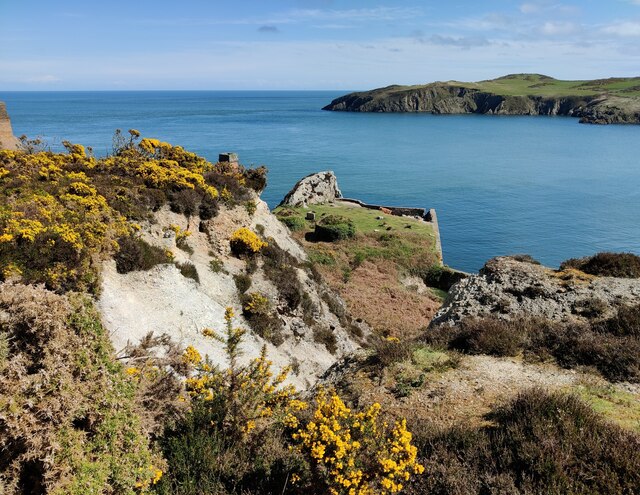
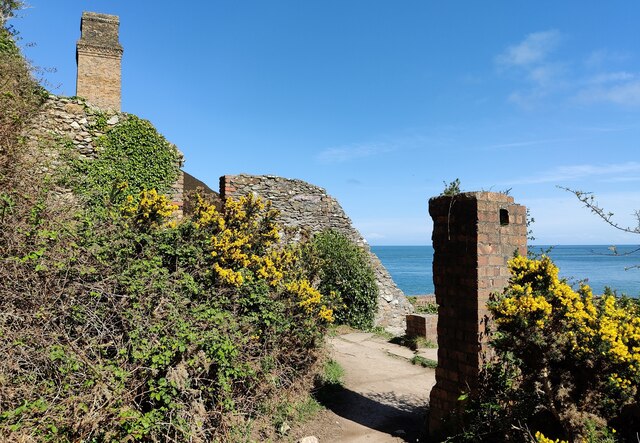
Porth Llanlleiana is located at Grid Ref: SH3895 (Lat: 53.427848, Lng: -4.4314619)
Unitary Authority: Isle of Anglesey
Police Authority: North Wales
What 3 Words
///propelled.defaults.capillary. Near Cemaes Bay, Isle of Anglesey
Nearby Locations
Related Wikis
Llanbadrig - Dinas Gynfor
Llanbadrig - Dinas Gynfor is a Site of Special Scientific Interest (or SSSI) in Anglesey, North Wales. It has been designated as a Site of Special Scientific...
Middle Mouse
Middle Mouse (Welsh: Ynys Badrig - Patrick's island) is an uninhabited island situated 1 kilometre (1000 yards) off the north coast of Anglesey. It is...
St Padrig's Church, Llanbadrig
St Padrig's Church is a medieval church in the village of Llanbadrig, Anglesey, Wales. The building probably dates from the 12th century and underwent...
Llanbadrig
Llanbadrig is a village and community (and former electoral ward) in Anglesey, Wales. The parish includes the township of Clygyrog, Tregynrig and the port...
Nearby Amenities
Located within 500m of 53.427848,-4.4314619Have you been to Porth Llanlleiana?
Leave your review of Porth Llanlleiana below (or comments, questions and feedback).
